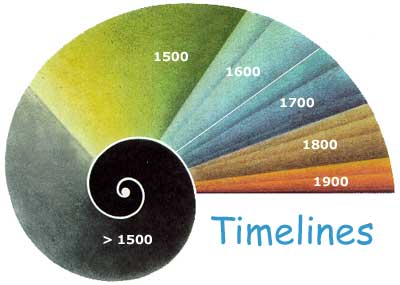

|

The traditions surrounding journeys to the far north are lost in a prehistoric mist.
The Greeks fantasized about life in the north, but it was not until the geographer Pytheas
travelled to an island he called Thule, in the 4th-century B.C., that we know of anything
with any certainty. Another reliable source of northern journeys dates from the viking chieftan
Ottar whose account tells of his travels that took him around the North Cape to the White Sea.
He told his story to King Alfred of England. Old Norse sagas, too, tell of northern life and journeys
to this region. Nonetheless, it was not until the age of exploration that planned expeditions arose in
the 16th-century. The need for new trading routes to the Far East had begun, along with the desire
to seek both the Northeast Passage and the Northwest Passage. During several attempts to find the the
Northeast Passage, the Dutch Willem Barentsz discovered Spitsbergen. Wonderfully colorful depictions
of life in the northern part of Norway may also be found in the documents of 17th- and 18th-century civil
servants. Exploration of the arctic regions was gradually intensified throughout the 19th-century, and
both scientific and national interests were of central importance in attempts to reach the Northwest Passage
and the North Pole. The Norwegian Fridtjof Nansen made a dramatic attempt to get to the North Pole,
from 1893-96, but the American Robert Peary first achieved this goal in 1910.
|

|
© University Library of Tromsø - 1999.
The Northern Lights Route is part of The Council of Europe Cultural Routes. The Cultural Routes are an invitation to Europeans to wander the paths and explore the places where the unity and diversity of our European identity were forged.
|

|